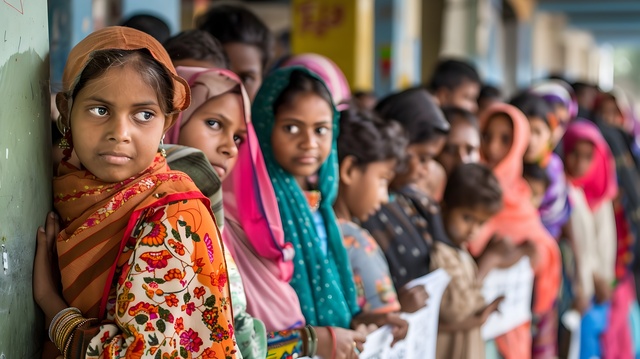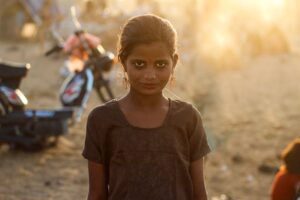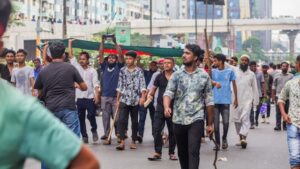Introduction
The Universal Declaration of Human Rights adopted in 1948 declares that—“All human beings are born free and equal in dignity and rights” (United Nations, 1948, Article 1). But for millions of women in the world, especially women growing up in conservative societies like Bangladesh, this fundamental principle is only a desire, in reality it does not materialize. Conservative society—where traditional gender-based roles, religious rigidity, and resistance to social change are strong—there women fall into the trap of complex structural violence, which limits their opportunities and alternatives (Galtung, 1969).
My story starts in Bangladesh—a country where even though the constitution guarantees gender equality, patriarchal rules still control everything in a woman’s life. According to the Global Gender Gap Report 2023 of the World Economic Forum, among 146 countries, Bangladesh is in 59th place. Yet, inequality in economic participation and political power is still strongly present (World Economic Forum, 2023). But these statistics can never fully capture the pain of discrimination in personal life.
Poverty and Gender Intersection: Barriers on the Path to Education
Growing up as the fourth child among seven siblings, I witnessed how poverty and gender together create double deprivation and inequality. Legal scholar Kimberlé Crenshaw (1989) first introduced the concept of intersectionality, which explains—how different types of oppression together create specific experiences. In our family, being a girl meant education was only a luxury or socially rebellious behavior. In our society, girls are seen only as consumable products or machines for producing children.
My elder sister’s very early marriage against her own will and being trapped in an abusive household is a real example of this. UNICEF says, even today, nearly 12 million girls fall victim to child marriage every year, and half of this happens in South Asia (UNICEF, 2021). My sister’s abuse reflects the World Health Organization’s information—where it is said that worldwide, one in three women experiences physical or sexual violence, mostly at the hands of husband or intimate partner (WHO, 2021).
Her suffering made me determined to pursue education. But this path was never easy—because even the boys in our family could not go to school due to lack of money. Economic crisis and gender inequality together create deprivation from education, which is an example of Nobel laureate Amartya Sen’s (1999) so-called “capability deprivation.”
From seventh grade, to cover the cost of my studies, I started giving private tuition. This was James Scott’s (1985) “everyday resistance”—where marginalized people silently find survival strategies through gaps in inequality. Feminist economist Naila Kabeer (1999) called this “negotiation with patriarchy”—where women adjust a little and create limited spaces of power for themselves.
Persistence in Education and Institutional Barriers
From secondary to higher education, I saw and understood—how gender inequality survives even through seemingly neutral educational systems in a conservative society. Failing the higher secondary exam twice due to lack of money and family support is strong evidence of this.
In 2016, enrolling in Social Science Honors at Bangladesh Open University was partly compromise, partly strategy. Because a degree from Open University does not gain the same respect as a regular university degree in society. The different dimension of cultural capital, as mentioned by sociologist Pierre Bourdieu (1986), is clear here.
Before studying for an MBA, I had to take responsibility for the whole family due to my mother’s death from cancer. United Nations Women (2020) says, globally, women do three times more unpaid care work than men, which stops their education and career. My experience reflects that reality.
Professional Life and Sexual Harassment
After entering employment, I realized—being a woman in a conservative society means bearing the fear of sexual harassment at work. From my first job, due to sexual harassment by the employer, I had to leave the job. International Labour Organization (ILO, 2022) says, worldwide, over 200 million women experience sexual harassment at the workplace.
In my second job in the garments sector, I faced even more complex inequality—because my husband is Buddhist. Human Rights Watch (2015) said, in Bangladesh’s garment industry, women still do not receive adequate protection and religious-gender inequality is strong. My experience reflects that reality. It is not only my personal experience; my husband’s experience of discrimination is also strong.
Marriage, Religious Difference, and Social Rejection
Deciding to marry someone of a different religion was seen as the most “unacceptable” step in my life. Although Bangladesh’s constitution guarantees religious freedom, in reality, the opposite is seen in society. Family, neighbors, and even society’s pressure forced us into secrecy.
Pew Research Center (2016) research says, social hostility due to religious difference impacts women more, especially in South Asia. Even without legal obstacles, social punishment is still severe.
Protecting Rights and Social Activism
My human rights work—participating in Amnesty International’s online course or volunteering in organizations working on minority rights—was bell hooks’ (1994) “critical consciousness.” Through this, personal struggle can be transformed into the fight for social change.
Creating the website Diprights.com is part of that effort, where marginalized people’s voices can reach a larger audience digitally.
Conclusion: On the Path of Dignity and Equality
My experience proves that surviving as a woman in a conservative society means continuous struggle, resistance, and adaptation. Yet, the power of education and human rights movements creates a path from personal pain to social change.
My truth is not just victimhood—but a story of resistance, dreams, and hope. Every woman who takes education despite family opposition, every couple who builds a relationship overcoming religious difference, every person who speaks against inequality—they all gradually change conservative society.
I move forward carrying my sister’s, my mother’s, and countless women’s incomplete dreams, with the belief that future generations will live with dignity and equality—which is the birthright of every human being.
References:
Appadurai, A. (1996). Modernity at Large: Cultural Dimensions of Globalization. University of Minnesota Press.
Arab Human Development Report. (2005). Towards the Rise of Women in the Arab World. United Nations Development Programme.
Berger, P. L. (1967). The Sacred Canopy: Elements of a Sociological Theory of Religion. Doubleday.
Bourdieu, P. (1986). The forms of capital. In J. Richardson (Ed.), Handbook of Theory and Research for the Sociology of Education (pp. 241-258). Greenwood.
Crenshaw, K. (1989). Demarginalizing the intersection of race and sex: A black feminist critique of antidiscrimination doctrine, feminist theory and antiracist politics. University of Chicago Legal Forum, 1989(1), 139-167.
Duckworth, A. (2016). Grit: The Power of Passion and Perseverance. Scribner.
Freire, P. (1970). Pedagogy of the Oppressed. Continuum International Publishing Group.
Galtung, J. (1969). Violence, peace, and peace research. Journal of Peace Research, 6(3), 167-191.
Harding, S. (1991). Whose Science? Whose Knowledge?: Thinking from Women’s Lives.
Hill Collins, P. (2000). Black Feminist Thought: Knowledge, Consciousness, and the Politics of Empowerment.
hooks, b. (1994). Teaching to Transgress: Education as the Practice of Freedom.
Human Rights Watch. (2015). Whoever Raises their Head Suffers the Most: Workers’ Rights in Bangladesh’s Garment Factories. Human Rights Watch.
Inglehart, R., & Welzel, C. (2005). Modernization, Cultural Change, and Democracy: The Human Development Sequence.
International Labour Organization. (2022). Experiences of Violence and Harassment at Work: A Global First Survey. ILO Publications.
Kabeer, N. (1999). Resources, agency, achievements: Reflections on the measurement of women’s empowerment. Development and Change, 30(3), 435-464.
Kandiyoti, D. (1988). Bargaining with patriarchy. Gender & Society, 2(3), 274-290.
Kirk, R. (1953). The Conservative Mind: From Burke to Eliot.
Mama, A. (2003). Restore, reform but do not transform: The gender politics of higher education in Africa. Journal of Higher Education in Africa, 1(1), 101-125.
Meyer, I. H. (2003). Prejudice, social stress, and mental health in lesbian, gay, and bisexual populations: Conceptual issues and research evidence. Psychological Bulletin, 129(5), 674-697.
Mohanty, C. T. (2003). Feminism Without Borders: Decolonizing Theory, Practicing Solidarity. Duke University Press.
Pew Research Center. (2016). Trends in Global Restrictions on Religion. Pew Research Center.
Scott, J. C. (1985). Weapons of the Weak: Everyday Forms of Peasant Resistance.
Scott, J. C. (1990). Domination and the Arts of Resistance: Hidden Transcripts.
Sen, A. (1999). Development as Freedom. Anchor Books.
UNICEF. (2021). Child Marriage: Latest Trends and Future Prospects. UNICEF Data and Analytics.
United Nations. (1948). Universal Declaration of Human Rights. UN General Assembly Resolution 217A.
United Nations Development Programme. (2020). Human Development Report 2020: The Next Frontier – Human Development and the Anthropocene. UNDP.
United Nations Women. (2020). Progress on the Sustainable Development Goals: The Gender Snapshot 2020. UN Women.
World Economic Forum. (2023). Global Gender Gap Report 2023. World Economic Forum.
World Health Organization. (2021). Violence Against Women: Key Facts. WHO Fact Sheets.




